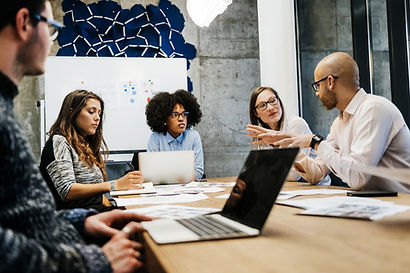CONNECTIVISM


Connectivism is a learning theory that focuses on the social and cultural aspects of learning with the integration of technology to obtain information. Learning can happen through the use of technology whether it is via an online discussion forum, video calls, interactive simulations. Teachers assist in facilitating the learning process, allowing learners to be in control of their learning. Learners are given access to a variety of platforms that they can use to explore and combine the information found to achieve the learning goal given. For example students may be given an assignment to learn about fast land changes can choose a specific land change. Students are given a list of approved sites to use to find the information such as BrainPOP Jr, Generation Genius and Epic! to find their information. Students then can create a presentation incorporating the information they found by making either a PowerPoint presentation, a recorded news report, an interactive play or their own book.
Through this the students will be able to make their own discoveries and during this time learn about their chosen land change. As they make decisions and discuss amongst themselves they will be able to provide their different perspectives that may come from their cultural background, personal experiences or the information that they found. Students are motivated to work together to gather information and create a final product that they will feel proud of.
Generation Genius: Weathering and Erosion
https://www.generationgenius.com/videolessons/weathering-and-erosion-
video-for-kids/
Epic! Online Books about Slow & Fast Land Changes
https://www.getepic.com/collection/120079/slow-fast-land-changes
The Founders of Connectivism
Implications of Connectivism for Instructional Design
-
Online platforms are used to connect learners with one another where they can share ideas, work collaboratively and gain knowledge through meaningful interactions.
-
Learners are encouraged to be active participants by doing their own research and discovering new information that they must decipher to see if it can be used based on current the information is.
-
Learners have access to open educational resources (OER) that can be explored to learn about perspectives that may differ from their own and that can help shape their knowledge, create new connections.
-
Creating real-world scenarios where learners can practice through simulations that have a purpose where they can challenge themselves and come to their own conclusions that will be beneficial in their line of work.
Strengths and Limitations of Connectivism in Government/Military

-
Connects service members through online discussion forums and video conferencing where ideas and collaborations can happen despite not being in the same location so operations can be done globally.
-
Simulations are created where service members can practice real-world scenarios and learn to make those decisions since the simulations mimic what they may encounter in the field.
-
Service members are kept up-to date with the current policies to make sure they are making informed decisions that align with the current requirements of the government.
References
-
Applying connectivism to instructional design. (n.d.). https://leocontent.umgc.edu/content/umuc/tgs/ldtc/ldtc600/2252/unit-5/Applying-Connectivism-to-Instructional-Design.html?ou=1279899
-
Bates, A. (2022, August 18). 2.6 Connectivism. Pressbooks. https://pressbooks.bccampus.ca/teachinginadigitalagev3m/chapter/3-6-connectivism/
-
BrainPOP JR. (n.d.). https://jr.brainpop.com/topic/fast-land-changes/
-
Connectivism. (n.d.). https://leocontent.umgc.edu/content/umuc/tgs/ldtc/ldtc600/2252/unit-5/Connectivism.html?ou=1279899
-
EdTech Books. (n.d.). https://open.byu.edu/education_research/connectivism
-
Epic! Creations Inc. (n.d.). Slow & Fast Land Changes Book collection on Epic. Epic - Books for Kids. https://www.getepic.com/collection/120079/slow-fast-land-changes
-
Garfield, S. (2024, December 8). George Siemens: Profiles in Knowledge - Stan Garfield - Medium. Medium. https://stangarfield.medium.com/george-siemens-profiles-in-knowledge-98022a57632d
-
Generation Genius. (2024, April 30). Weathering & Erosion video for kids | 3rd, 4th & 5th grade. https://www.generationgenius.com/videolessons/weathering-and-erosion-video-for-kids/
-
Pappas, C. (2023, April 27). Everything you need to know about the Connectivism learning Theory. eLearning Industry. https://elearningindustry.com/everything-you-need-to-know-about-the-connectivism-learning-theory
-
Pappas, C. (2024, July 26). 5 tips for using Connectivism in eLearning. eLearning Industry. https://elearningindustry.com/5-tips-using-connectivism-elearning
-
Stephen Downes: How I use AI. (2023, April 4). https://oeb.global/oeb-insights/stephen-downes-how-i-use-ai/
